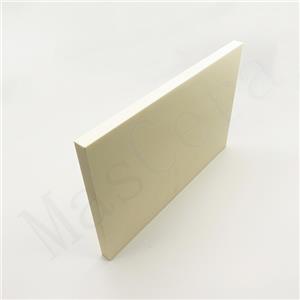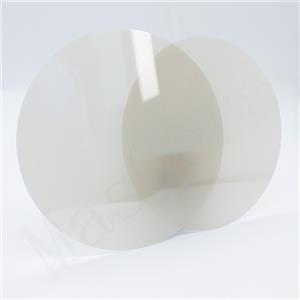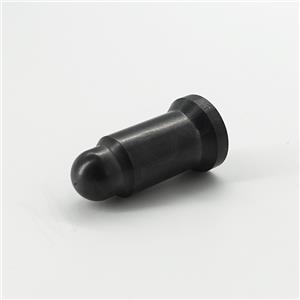Application of Alumina Ceramic Substrates in Thermal Interface Materials (TIM) and Structural Insulating Layers
In high-power electronics and LED lighting systems, managing heat while ensuring electrical insulation is crucial for reliability. Thermal interface materials (TIMs) fill air gaps between heat sources and heat sinks, boosting heat flow, and structural insulating layers provide robust electrical isolation and mechanical support. Alumina ceramic substrates uniquely serve both roles as a dielectric thermal interface – they conduct heat efficiently like a TIM while electrically insulating like a dedicated insulator. This combination of high thermal conductivity and high dielectric strength is difficult to achieve with conventional materials, making alumina (Al₂O₃) ceramics increasingly important in applications from LED drivers to high-voltage power modules.Engineers in LED lighting, power electronics, medical power supplies, and semiconductor packaging are turning to alumina ceramic substrates to improve heat dissipation and long-term reliability.

Alumina ceramic substrates are valued for a balance of thermal, electrical, and mechanical performance:
High Thermal Conductivity
96% alumina offers around ≥24 W/m·K thermal conductivity – far higher than typical polymer insulators (which are often <5 W/m·K). This means alumina efficiently spreads heat from hot components to heat sinks. It can operate at high temperatures (alumina’s melting point is ~2050 °C), far beyond the limits of polymer-based materials, making it suitable for devices that run hot or in harsh environments.
Excellent Electrical Insulation
Alumina is an electrical insulator with a dielectric strength often above 17 kV/mm. In practical terms, a thin alumina substrate can withstand thousands of volts without breakdown. Its volume resistivity is ≥10^14 Ω·cm, ensuring minimal leakage current. Additionally, alumina’s dielectric loss is very low, which is important in high-frequency or RF circuits. This strong dielectric performance allows alumina substrates to provide high-voltage isolation in power modules and power supplies.
High Mechanical Strength and Stability
Alumina ceramics are hard. A 96% alumina substrate typically has a flexural strength ≥350 MPa, meaning it can handle mechanical stress and mounting pressure without cracking (as long as it’s properly supported). It is wear-resistant, chemically inert, and has essentially 0% water absorption, so it won’t swell or degrade in humid conditions. Alumina’s coefficient of thermal expansion is lower than that of metals, which helps reduce thermal stress in packages. Unlike mica or plastic films, alumina substrates do not age or creep over time and can withstand thermal cycling without losing integrity.
High Temperature and Environmental Resistance
Alumina remains stable at temperatures well above 300 °C, whereas many polymer insulators (like polyimide or silicone) start to degrade above 150–200 °C. It’s non-flammable and often meets UL 94V-0 without additives. Alumina is also corrosion-resistant – it doesn’t react with most chemicals or moisture. This makes it suitable for harsh environments and high-reliability applications (e.g. automotive engine compartments or industrial power electronics) where standard PCB materials or silicone-based pads might fail.
Cost-Effective for a Ceramic
While alumina is more expensive than FR-4 boards or simple mica sheets, it is significantly more affordable than exotic ceramics like aluminum nitride (AlN). It provides a good price-to-performance ratio: you get substantially better thermal performance and reliability than polymers, at a reasonable cost for high-performance applications. This balance makes alumina a practical choice when pure performance materials (like AlN or BeO) are not justified.
In summary, alumina ceramic substrates combine good heat conduction, superb electrical insulation, mechanical robustness, and thermal stability. These properties underpin their role as both TIM and insulating structural layers in electronic assemblies.
How Alumina Ceramic Substrates Function in TIM Applications
An alumina ceramic substrate can function as a thermal interface material while also serving as a structural insulating layer in a device. Here’s how it works:
Thermal Conduction Mechanism
When used as a TIM (for example, as a pad or substrate between a power device and a heatsink), alumina’s high thermal conductivity allows heat to flow rapidly through it. The ceramic substrate replaces or complements softer TIMs by providing a direct heat path with lower thermal resistance than thick pads or air gaps. A thin alumina pad, even 0.5–1 mm thick, conducts heat efficiently from a transistor base or LED module into the heatsink.
Electrical Insulation and Dielectric Isolation
Alumina substrates simultaneously act as a dielectric insulator. In a typical use, the alumina layer sits between a high-voltage component and a grounded heatsink or chassis. It safely isolates the two, withstanding high voltages (on the order of kilovolts) without breakdown. This dual function – transferring heat while blocking electricity – is what makes alumina a “dielectric thermal interface”. In power modules, for example, a ceramic substrate can carry heat away from IGBT chips while insulating them from a metal baseplate. The alumina layer thus serves as the structural insulating layer in the stack, replacing materials like mica, epoxy, or polyimide films that were traditionally used solely for electrical isolation.
Structural Support
Unlike paste or gel TIMs, a ceramic substrate is a rigid structural material. It adds mechanical stability: components can be mounted directly on the alumina substrate (soldered or attached with clips) and the substrate can be screwed or clamped to a heatsink or enclosure. Alumina substrates often act as the physical carrier of a circuit – for instance, in a hybrid thick-film circuit or a power module, the alumina substrate is both the circuit board and the heat spreader. Even as a standalone insulating pad (such as under a transistor), the ceramic pad provides a solid backing that won’t deform under pressure. This can improve assembly consistency (no worrying about pad compression or bleed-out). However, being rigid means the surfaces should be flat and parallel; applying even pressure is important to avoid cracking a ceramic or a device. With proper mounting (using screws with shoulder washers or spring clips), alumina insulator pads are quite durable and “not easy to break” under normal use. They maintain their form factor and performance even under high clamping force and temperature cycling, unlike mica which can crack or silicone pads which can creep.
Interface Characteristics
Alumina ceramic TIMs typically come in polished or glazed forms to minimize surface roughness. This surface finish helps achieve good thermal contact. In some designs, the alumina substrate may have metallized traces or solder pads (e.g., direct-bonded copper on alumina in power modules), so it serves as both the circuit and the TIM. In other cases, it’s a blank ceramic piece used purely as an insulator – for example, ceramic thermal pads for standard transistor packages (TO-220, TO-247, etc.) are cut to shape for mounting holes and simply inserted between the transistor and heatsink. Alumina ceramic insulating pads (white) for power transistors offer a high-thermal-conductivity, electrically insulating interface. These rigid ceramic thermal pads replace mica and grease, providing a cleaner and more durable TIM solution. Such alumina pads allow heat to flow into the heatsink while maintaining isolation, effectively performing the same role as a silicone gap pad or mica+grease, but with a single sturdy piece. The result is often a lower junction temperature and improved high-frequency performance of the device, because the ceramic has lower thermal impedance and introduces less capacitive coupling than flexible polymer insulators.
Alumina ceramic substrates function as multifaceted TIM solutions: they conduct heat like a dedicated thermal pad, insulate like a dielectric layer, and add mechanical stability as a solid mounting base. This unique combination streamlines thermal management and insulation in one component.
Typical Application
Alumina ceramic substrates find use across many industries where efficient cooling and electrical insulation must coexist. Below are some typical application scenarios and why alumina is chosen:
LED Driver Modules and Lighting
High-brightness LEDs and their driver circuits generate significant heat in compact assemblies. Alumina substrates are often used either as the LED mounting boards or as insulation for driver electronics. For example, LED COB (Chip-On-Board) assemblies frequently employ alumina or similar ceramics as the board material, which both spreads heat and insulates the LEDs from the metal casing. Likewise, LED power driver modules (AC/DC converters for lighting) use alumina insulating plates to isolate high-voltage sections from heat sinks. The ceramic’s high thermal conductivity improves LED lifespan by keeping junctions cool, and its insulation allows LED modules to be attached to metal housings safely. An LED driver circuit built on a round alumina ceramic substrate for efficient heat dissipation and high-voltage insulation. In LED lighting, using alumina ceramic insulating layers can reduce the need for additional heat sinks or fans, enabling compact lamp designs. The reliability of ceramic (no drying out or aging) is especially valued in LED systems that must run for tens of thousands of hours.
Power Semiconductor Modules (IGBTs/MOSFETs and OEM Power Modules)
Perhaps the most widespread use of alumina substrates is in power modules – for example, IGBT inverter modules, MOSFET bridge modules, and automotive power control units. These modules often use DBC (Direct Bonded Copper) or similar constructions where a layer of alumina ceramic is sandwiched between copper patterns and a metal baseplate. The alumina serves as the dielectric thermal interface: it carries heat from the semiconductor devices to the baseplate or heatsink, while withstanding high DC bus voltages (600 V, 1200 V or more in EV inverters). In such modules, alumina ceramic substrates ensure each power die is electrically isolated from the heatsink without requiring separate mica or pad insulators. They also exhibit low parasitic capacitance, which is beneficial for high-frequency switching (reduced EMI coupling). Power module OEM engineers prefer alumina for its proven track record – 96% alumina is cost-effective and has adequate thermal performance for many designs. For even higher power density, some might use AlN ceramics, but alumina remains popular for many industrial and automotive modules due to its high reliability and mechanical strength under cycling. Additionally, alumina’s CTE being closer to semiconductor materials than metal spreads reduces thermal stress on solder joints in these modules.
Power Supplies and High-Voltage Electronics
AC-DC power supplies (including those for medical devices and industrial equipment) often require insulation between high-voltage components and the chassis or heatsinks. Alumina ceramic insulating plates are used to mount power transistors, rectifiers or voltage regulators onto heatsinks in SMPS (switch-mode power supply) designs. They provide the necessary dielectric isolation (meeting safety creepage and clearance standards) and efficiently transfer heat from devices like MOSFETs or diodes to the cooling enclosure. In high-voltage/high-power supply units, using a ceramic insulating layer instead of multiple layers of thermal pad + insulator can simplify assembly and improve thermal conductivity. Medical power supplies especially benefit from ceramic TIMs because of their long-term stability and lack of outgassing – important for meeting strict reliability and contamination standards in medical environments. Engineers developing medical equipment power modules appreciate that alumina substrates don’t contain silicone oils (which can migrate or outgas) and can handle sterilization temperatures or rigorous operation without degrading. The result is a cooler, safer, and longer-lived power unit.
Semiconductor Packaging Baseplates and RF Devices
Alumina ceramic substrates are commonly used as packaging substrates for power semiconductors and RF/microwave components. For instance, high-power RF transistors and laser diode packages may use an alumina ceramic base that mounts onto a heatsink. The alumina baseplate not only spreads heat but also provides a stable, hermetic platform that matches thermal expansion with the die. In RF applications, alumina’s dielectric properties (moderate dielectric constant 9.5 and low loss) make it suitable for building impedance-controlled circuits directly on the substrate if needed. In these scenarios, the alumina substrate is essentially the structural insulating layer of the device package – it isolates the electrically live circuitry from the metal case, while conducting heat to that case. Compared to traditional metal-backed PCBs or plastic packages, ceramic-based packages allow higher power dissipation and operate reliably at high temperatures. Additionally, in sensors or medical implantable devices that generate heat, alumina’s biocompatibility and stability can be an asset (for example, alumina is sometimes used in implantable device substrates for its insulation and because it’s bio-inert).
Across all these applications – from LED modules to IGBT inverters – alumina ceramic substrates enable designs that run cooler and more safely. They allow engineers to push power densities higher by removing heat more effectively, all while maintaining isolation in high-voltage environments. The result is often improved performance and durability of the end product.
Comparison with Traditional Materials
How do alumina ceramic TIM/insulators stack up against more traditional thermal interface and insulating materials? Below is a comparison of key alternatives:
Silicone Grease (Thermal Paste)
Thermal grease is a common TIM used to fill microscopic gaps between a device and heatsink. High-quality greases can have thermal conductivities around 3–10 W/m·K, and they wet surfaces well for low contact resistance. However, grease provides no structural support or electrical insulation. In fact, many greases are not electrically insulating (those that are usually have alumina or zinc oxide fillers). Grease also suffers from pumping and drying over time – it can migrate, attract dust, and needs careful reapplication if a component is replaced. In assembly, grease is messy and can complicate manufacturing (it’s time-consuming to apply and must be kept off any soldering or connector surfaces). Alumina ceramic pads eliminate these issues: they are clean, re-usable insulators that once installed do not require maintenance. While grease may initially achieve slightly lower interface resistance on ultra-flat surfaces, the difference is small if the ceramic pad is thin and used with a tiny dab of grease. For most high-power applications, the reliability and cleanliness of alumina outweigh the slight advantage grease might have in thermal performance. This is why manufacturers developed silicone-based pad materials as a “grease-free alternative” decades ago – and alumina ceramic is an extension of that philosophy, giving grease-like thermal performance without the mess. Mica Insulator Sheets: Mica (a natural mineral) has been used for many years as an electrical insulating washer, especially in transistor mounting. Mica is electrically excellent (dielectric strength often > 5 kV/mm) and comes in thin sheets (~0.05–0.1 mm). However, mica’s thermal conductivity is poor (on the order of 0.3–0.5 W/m·K) and a bare mica insulator has high thermal impedance. For that reason, mica must be used together with thermal grease on both faces to get good heat transfer. This makes assembly cumbersome (grease on two sides), and if the mica cracks – which it easily can, being brittle – the thermal performance and insulation can be compromised. By contrast, an alumina ceramic insulator has much higher thermal conductivity (at least 20 W/m·K) and can often be used at greater thickness (0.5–1 mm) while still beating mica+grease in thermal performance. Alumina is also more robust in handling; while it’s a ceramic and can chip, a well-fired alumina substrate is typically stronger than thin mica which flakes apart. The downside is cost: mica is very cheap, whereas alumina ceramic is costlier per piece. But for high-reliability and power-dense designs, the cost is justified by the performance gain and reliability (no grease maintenance, no surprise mica failures). In summary, alumina ceramic pads are a modern upgrade over mica insulators, providing better heat conduction and mechanical strength.
Polyimide Films (e.g. Kapton)
Polyimide film is another insulating material used in some TIM stacks. It has high dielectric strength and can be very thin (25–125 µm), which helps reduce thermal resistance if used with a thermal compound. By itself, polyimide has extremely low thermal conductivity (around 0.1 W/m·K), so it’s usually combined with wax, grease, or adhesive to form an insulator tape or pad. For instance, some insulated pad products use a polyimide carrier with a thermally conductive coating. Polyimide is valued for being tough and flexible – it won’t crack like mica and can handle high temperatures (up to ~200 °C) without melting. However, under high-power conditions, a thin film can still be a bottleneck for heat flow, and its thinness can be a disadvantage for high voltage (needs multiple layers for very high voltage). Alumina ceramic substrates, in contrast, handle high temperatures even better and can provide high dielectric isolation in a single layer due to material thickness with far superior thermal conduction. Polyimide-insulator solutions are common in medium-power electronics, but for extreme thermal demands, ceramic insulating layers outperform them by maintaining insulation at much lower thermal impedance. One might use polyimide in lower-cost or lower-power cases, but graduate to alumina ceramic when facing high watt densities or when a rigid insulating structure is preferred.
Silicone Rubber Pads (Gap Pads/Thermally Conductive Pads)
Silicone-based elastomer pads (often filled with ceramic particles) are a popular TIM solution because they are soft and conformable. They can be pre-cut to shape, are easy to install (just sandwich in place), and provide both insulation and decent thermal conductivity (typically 1–5 W/m·K, with high-performance ones up to ~10 W/m·K). These pads eliminate the mess of grease and can fill gaps even if surfaces aren’t perfectly flat, thanks to their compressibility. The trade-offs are thermal performance and aging. Even the best silicone pad has higher thermal resistance than a hard ceramic for a given thickness, because the polymer matrix is less conductive and they are usually thicker to ensure good coverage. Silicone pads can also experience outgassing of volatiles (which is a problem for sensitive applications like optics or space) and can degrade over long periods at high temperature (becoming hard or brittle). Alumina ceramic substrates do not suffer from these issues – they remain stable and do not compress or degrade. If surfaces are reasonably flat, an alumina pad (possibly with a thin grease layer) will usually outperform a silicone pad of greater thickness. Mechanically, alumina’s rigidity can be a drawback if surfaces are rough or misaligned – in those cases a soft pad might provide better contact. But assuming good mating surfaces, the ceramic’s lack of compressibility is not a problem and its higher conductivity shines. In fact, in high-frequency or fast-switching circuits, using a ceramic insulator can improve performance because it reduces stray capacitance and doesn’t introduce the damping that a squishy pad might. Manufacturers note improved high-frequency stability when replacing silicone insulators with ceramic ones. The bottom line: silicone pads are convenient and sufficient for many applications, but for ultimate thermal and dielectric performance, alumina ceramic pads have the edge (with the caveat of careful mounting).
Other Advanced Materials
Alumina is not the only ceramic in town. Aluminum nitride (AlN) is a ceramic with very high thermal conductivity (170+ W/m·K) and good insulation, making it an attractive but more expensive alternative. BeO (beryllium oxide) offers even higher thermal conduction (~200–300 W/m·K) but is toxic to handle (beryllia dust is hazardous) and thus has fallen out of favor. Some specialized TIMs use hexagonal boron nitride or other ceramic fibers in a composite to boost conductivity. Compared to these, alumina sits in a sweet spot of affordability, ease of manufacture, and adequate performance. It may have lower thermal conductivity than AlN, but alumina substrates are far more common and cost perhaps one-third or less for equivalent size. Most applications (LEDs, power modules, etc.) can achieve their thermal requirements with alumina by adjusting thickness or using metal claddings, without resorting to pricier AlN. That said, if an application absolutely needs the highest thermal conductivity and budget allows, AlN ceramic insulating layers can be used similarly (and indeed many suppliers offer both alumina and AlN pads). In practice, the majority of ceramic TIM solutions use alumina for its balance, turning to AlN only for cutting-edge needs.
Traditional TIM and insulator materials each have their niches, but alumina ceramic substrates combine many of their best qualities (thermal performance of greases, insulation of mica, stability of polyimide, and reusability of pads) while minimizing drawbacks (no mess, no significant degradation). This makes alumina ceramics a compelling choice when designing for high power density and reliability.




